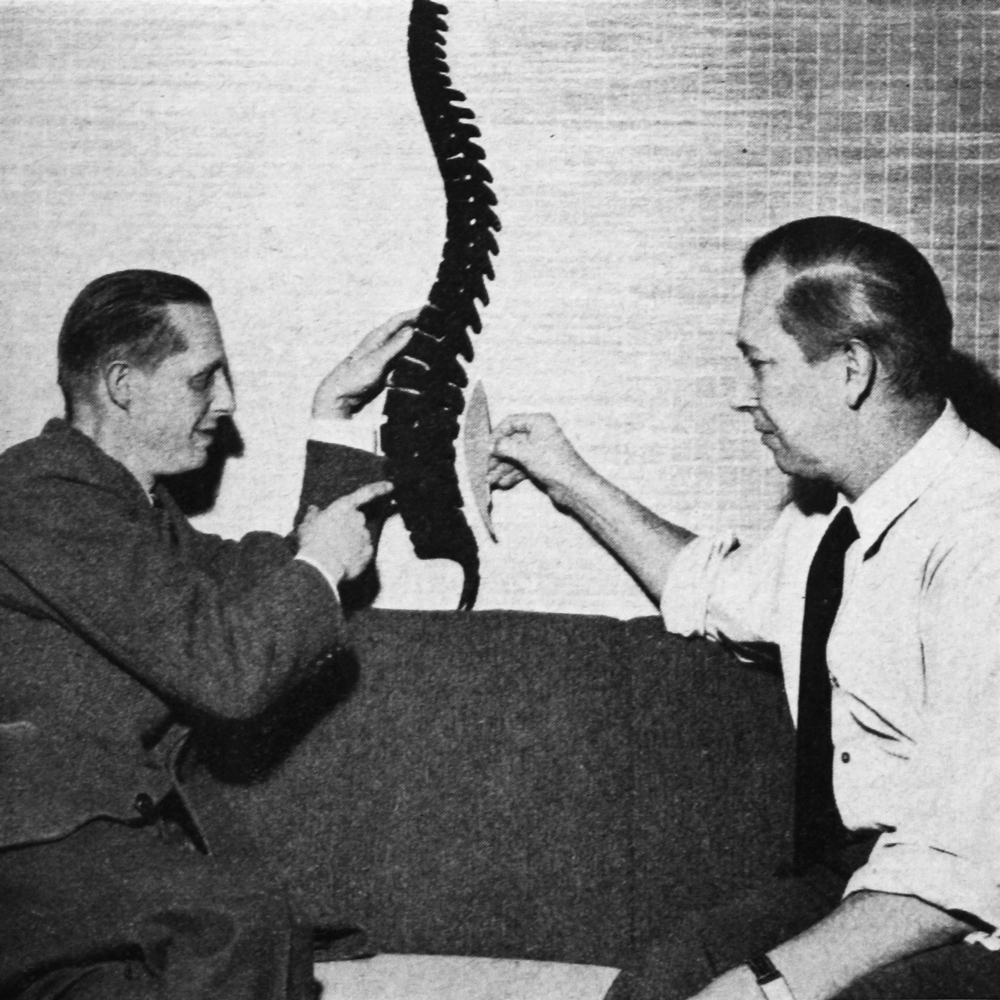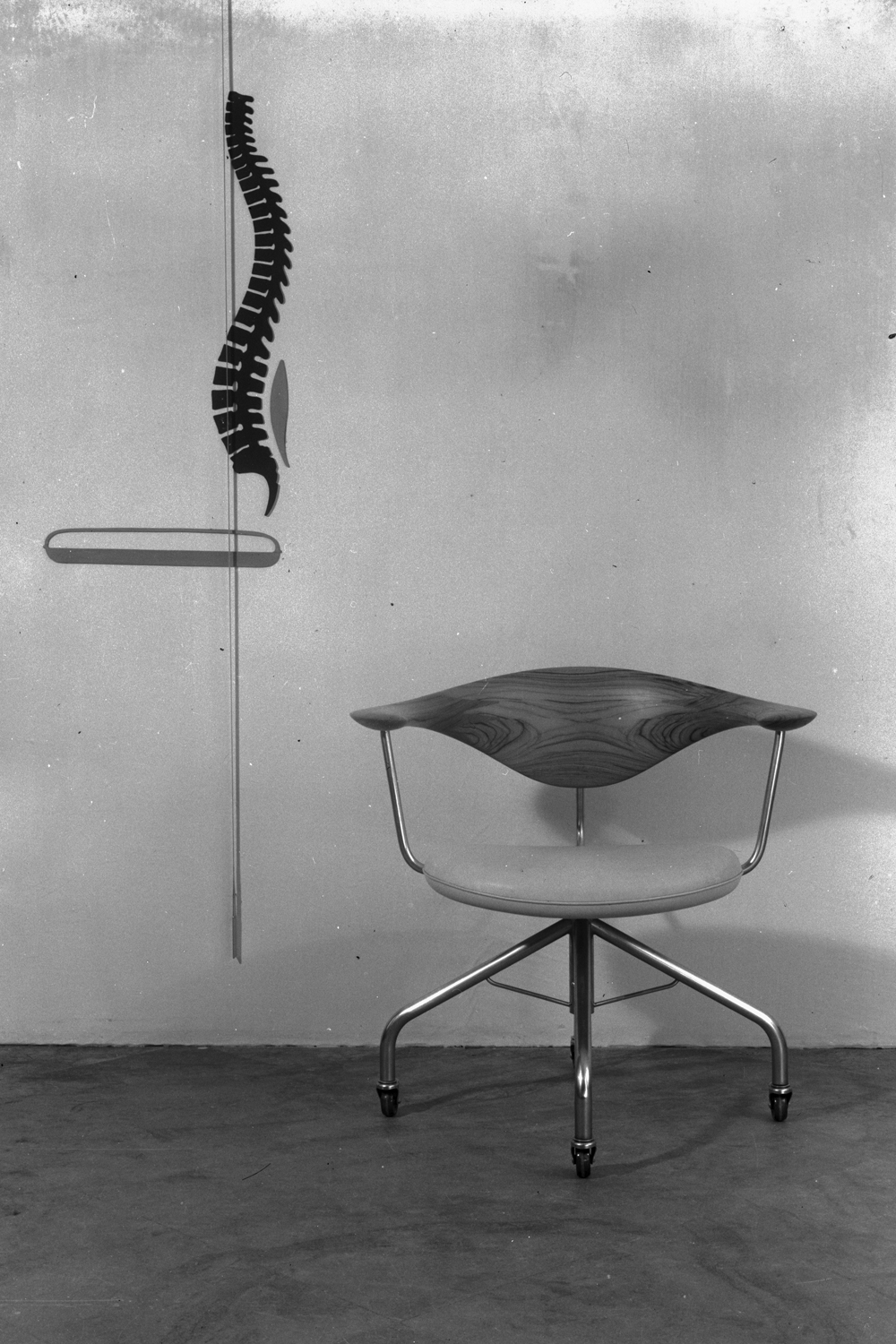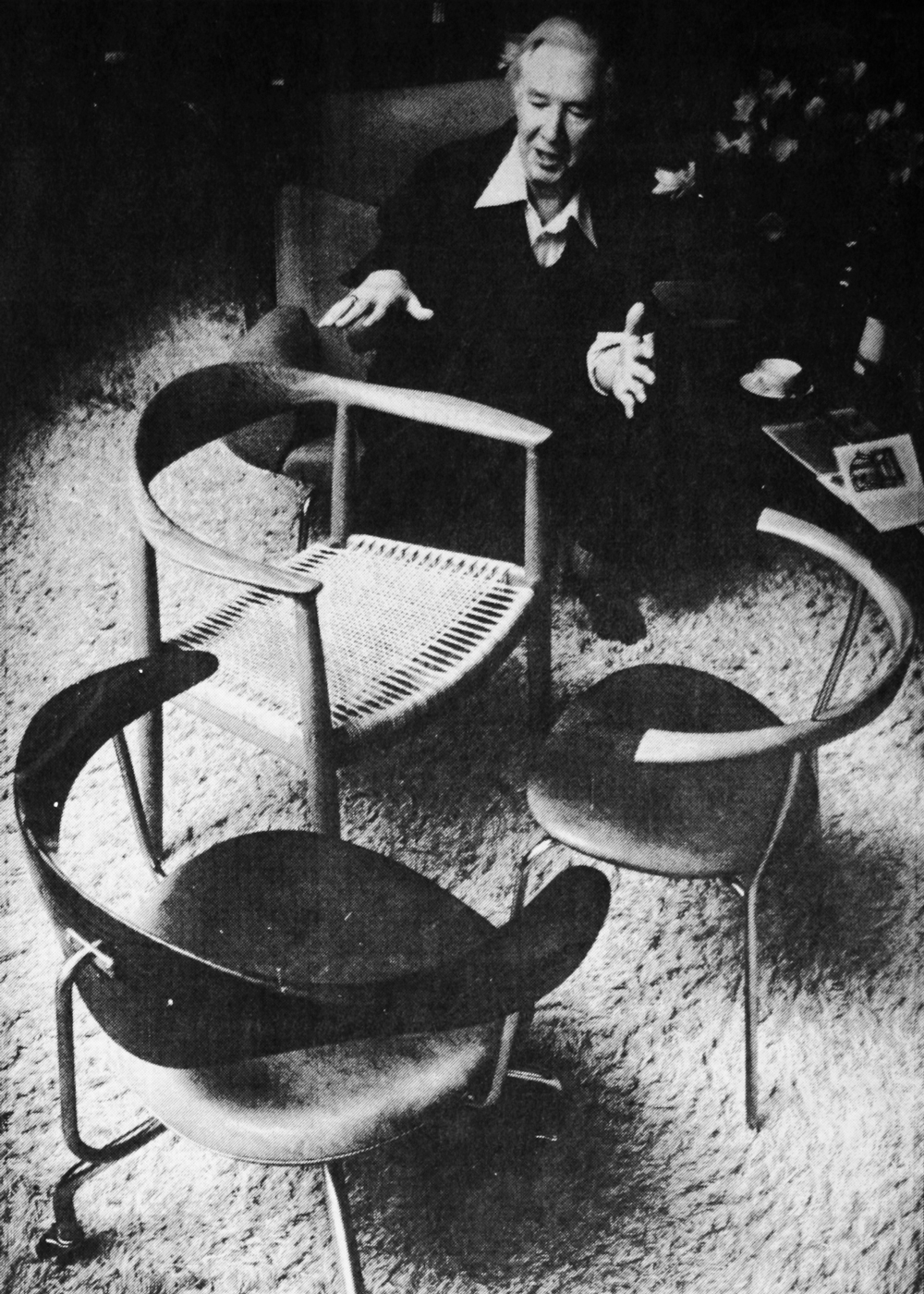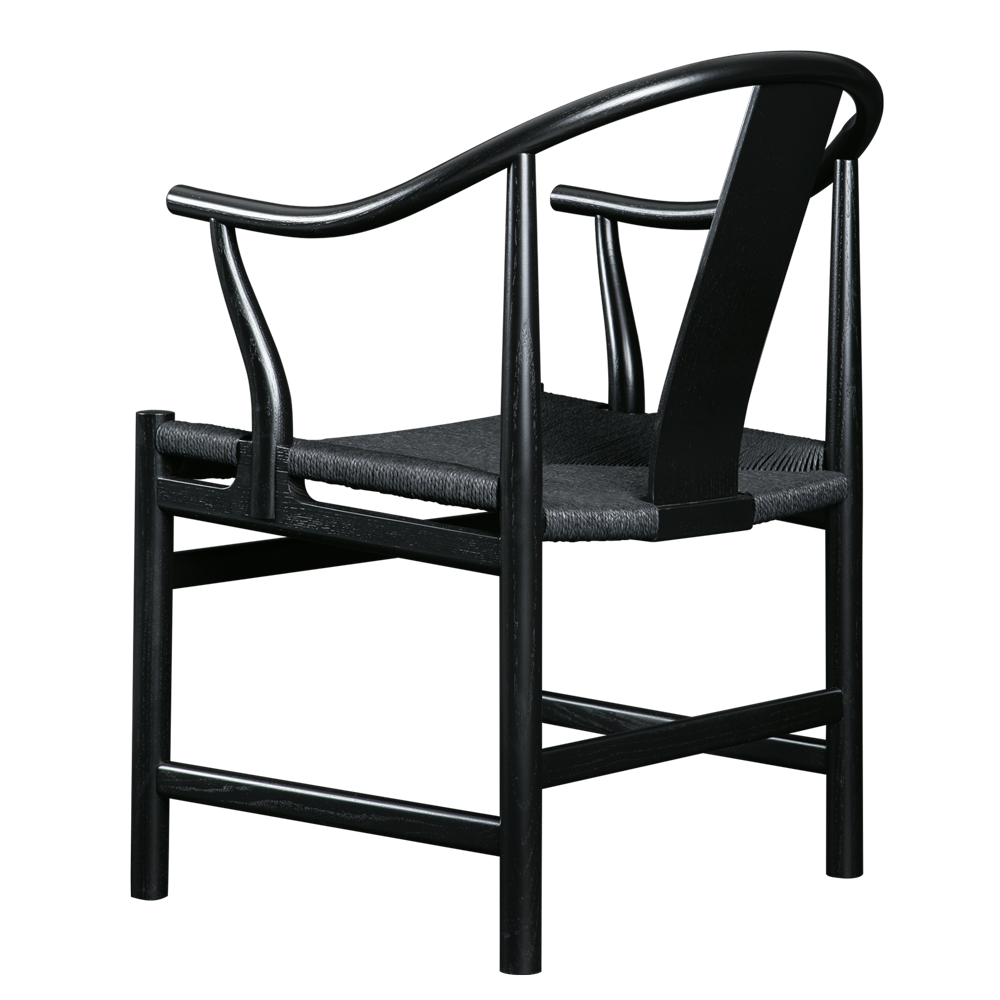Following the debut of the Round Chair, Wegner went through several distinct phases in seeking an adequate and healthy support for the back. In the 1950’s Wegner conducted pioneering multi disciplined studies on ergonomics with Consultant, Professor and Doctor of Medicine Egill Snorrason PhD.
The studies were based on X-ray images of the human spine and revealed new insight into the laws of ergonomics. As a statement on the results of the studies Wegner created the Swivel Chair.


The illustration dated 1953 shows the basic conclusions of Wegner’s pioneering studies on ergonomics:
1. Standing position
2. Wrong sitting position
3. Right sitting position.
Each chair has its own individual character, purpose and technical challenges. Nevertheless, they are each a clear result of the experience Wegner gained from earlier versions. Common to all of them was the omission of the vertical upright or splat back support of the Chinese chairs as it proved to counteract proper ergonomics.

“It’s important to have plenty of space for the behind”, Wegner often explained.
From the organically shaped back supports of the Round, Cow Horn and Swivel Chairs carved in large pieces of solid timber offering abundant comfort, Wegner gradually reduced the use of wood in his designs exemplified in the Bull Chair and the Minimal Chair.
Subsequently, in creating the pp201 | pp203, Wegner returned to the geometric form of the Chinese Chair with a frame and steam bent arms supporting the back while staying true to correct ergonomic principles. With the Captain’s Chair, Wegner increased the comfort reminiscent of the Round Chair.
Finally, in the pp68 | pp58, Wegner distilled the experience of a lifetime to create a simple yet supremely comfortable chair using a single piece of steam bent wood sculptured to support the back.
